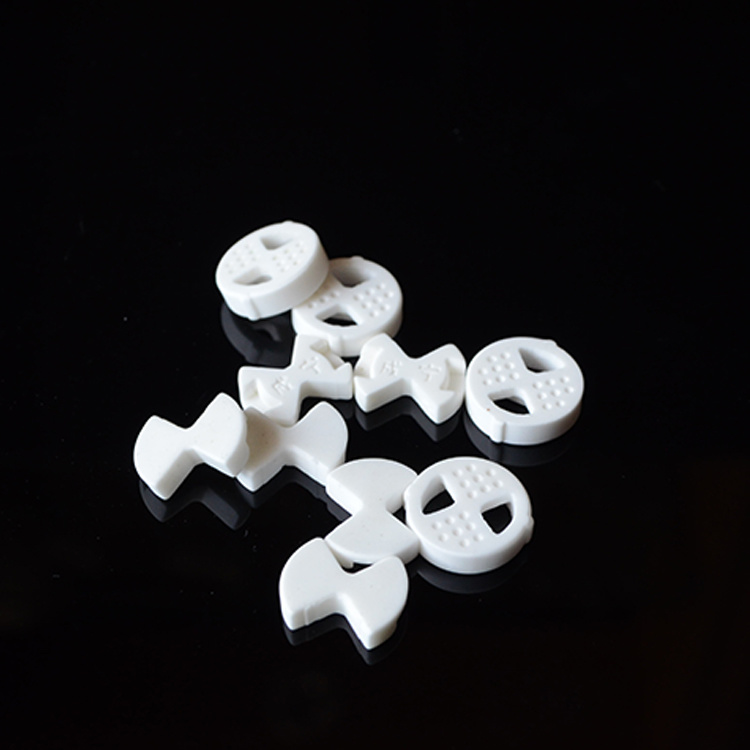
Unlocking the Secrets of Ceramic Fire Clay in Fire Assay Crucibles: A Comprehensive Guide
Time:
2024-05-18 09:00
Source:
# The Importance of Ceramic Fire Clay in Fire Assay Crucibles
When it comes to fire assay crucibles, the material used plays a crucial role in ensuring accurate and precise metal analysis. Ceramic fire clay is one of the most common materials used in the construction of these crucibles due to its unique properties and composition.
## What is Ceramic Fire Clay?
Ceramic fire clay is a type of clay that has been specially formulated to withstand high temperatures without losing its shape or integrity. It is composed of various minerals and additives that give it the necessary properties to withstand the extreme conditions of a fire assay process.
### Composition of Ceramic Fire Clay
The composition of ceramic fire clay can vary depending on the specific requirements of the crucible and the desired properties. However, common components include silica, alumina, and various fluxing agents that help improve the plasticity and thermal shock resistance of the clay.
#### Silica
Silica is a key component of ceramic fire clay, providing strength and stability to the material. It also helps to reduce shrinkage during the firing process, ensuring that the crucible maintains its shape and size.
#### Alumina
Alumina is another essential ingredient in ceramic fire clay, contributing to its high temperature resistance and chemical inertness. It helps prevent the clay from reacting with the molten metal during the assay process, ensuring accurate results.
### Benefits of Ceramic Fire Clay
The use of ceramic fire clay in fire assay crucibles offers several benefits, including:
- High temperature resistance
- Chemical inertness
- Low thermal expansion
- Excellent thermal shock resistance
- Consistent and reliable performance
## FAQ
1. **What is the firing temperature of ceramic fire clay?**
Ceramic fire clay is typically fired at temperatures ranging from 1200°C to 1400°C to achieve the desired properties.
2. **Can ceramic fire clay be reused in crucibles?**
While ceramic fire clay is durable, it may degrade over time with repeated use and exposure to high temperatures. It is recommended to replace the clay in crucibles periodically for optimal performance.
3. **How does ceramic fire clay compare to other crucible materials?**
Ceramic fire clay offers excellent thermal shock resistance and chemical inertness compared to other materials like graphite or silicon carbide.
4. **Is ceramic fire clay safe for use in metal analysis?**
Yes, ceramic fire clay is safe for use in fire assay crucibles and is specifically designed to withstand the harsh conditions of metal analysis processes.
5. **Can ceramic fire clay be customized for specific applications?**
Yes, ceramic fire clay can be tailored to meet the specific requirements of different metal analysis processes, making it a versatile material for crucible construction.
# Conclusion
In conclusion, ceramic fire clay is an essential component of fire assay crucibles, offering unmatched durability, thermal resistance, and chemical inertness. By understanding the composition and properties of ceramic fire clay, metallurgists and analysts can ensure accurate and reliable results in their metal analysis processes.
When it comes to fire assay crucibles, the material used plays a crucial role in ensuring accurate and precise metal analysis. Ceramic fire clay is one of the most common materials used in the construction of these crucibles due to its unique properties and composition.
## What is Ceramic Fire Clay?
Ceramic fire clay is a type of clay that has been specially formulated to withstand high temperatures without losing its shape or integrity. It is composed of various minerals and additives that give it the necessary properties to withstand the extreme conditions of a fire assay process.
### Composition of Ceramic Fire Clay
The composition of ceramic fire clay can vary depending on the specific requirements of the crucible and the desired properties. However, common components include silica, alumina, and various fluxing agents that help improve the plasticity and thermal shock resistance of the clay.
#### Silica
Silica is a key component of ceramic fire clay, providing strength and stability to the material. It also helps to reduce shrinkage during the firing process, ensuring that the crucible maintains its shape and size.
#### Alumina
Alumina is another essential ingredient in ceramic fire clay, contributing to its high temperature resistance and chemical inertness. It helps prevent the clay from reacting with the molten metal during the assay process, ensuring accurate results.
### Benefits of Ceramic Fire Clay
The use of ceramic fire clay in fire assay crucibles offers several benefits, including:
- High temperature resistance
- Chemical inertness
- Low thermal expansion
- Excellent thermal shock resistance
- Consistent and reliable performance
## FAQ
1. **What is the firing temperature of ceramic fire clay?**
Ceramic fire clay is typically fired at temperatures ranging from 1200°C to 1400°C to achieve the desired properties.
2. **Can ceramic fire clay be reused in crucibles?**
While ceramic fire clay is durable, it may degrade over time with repeated use and exposure to high temperatures. It is recommended to replace the clay in crucibles periodically for optimal performance.
3. **How does ceramic fire clay compare to other crucible materials?**
Ceramic fire clay offers excellent thermal shock resistance and chemical inertness compared to other materials like graphite or silicon carbide.
4. **Is ceramic fire clay safe for use in metal analysis?**
Yes, ceramic fire clay is safe for use in fire assay crucibles and is specifically designed to withstand the harsh conditions of metal analysis processes.
5. **Can ceramic fire clay be customized for specific applications?**
Yes, ceramic fire clay can be tailored to meet the specific requirements of different metal analysis processes, making it a versatile material for crucible construction.
# Conclusion
In conclusion, ceramic fire clay is an essential component of fire assay crucibles, offering unmatched durability, thermal resistance, and chemical inertness. By understanding the composition and properties of ceramic fire clay, metallurgists and analysts can ensure accurate and reliable results in their metal analysis processes.
ceramic fire clay fire assay crucible

